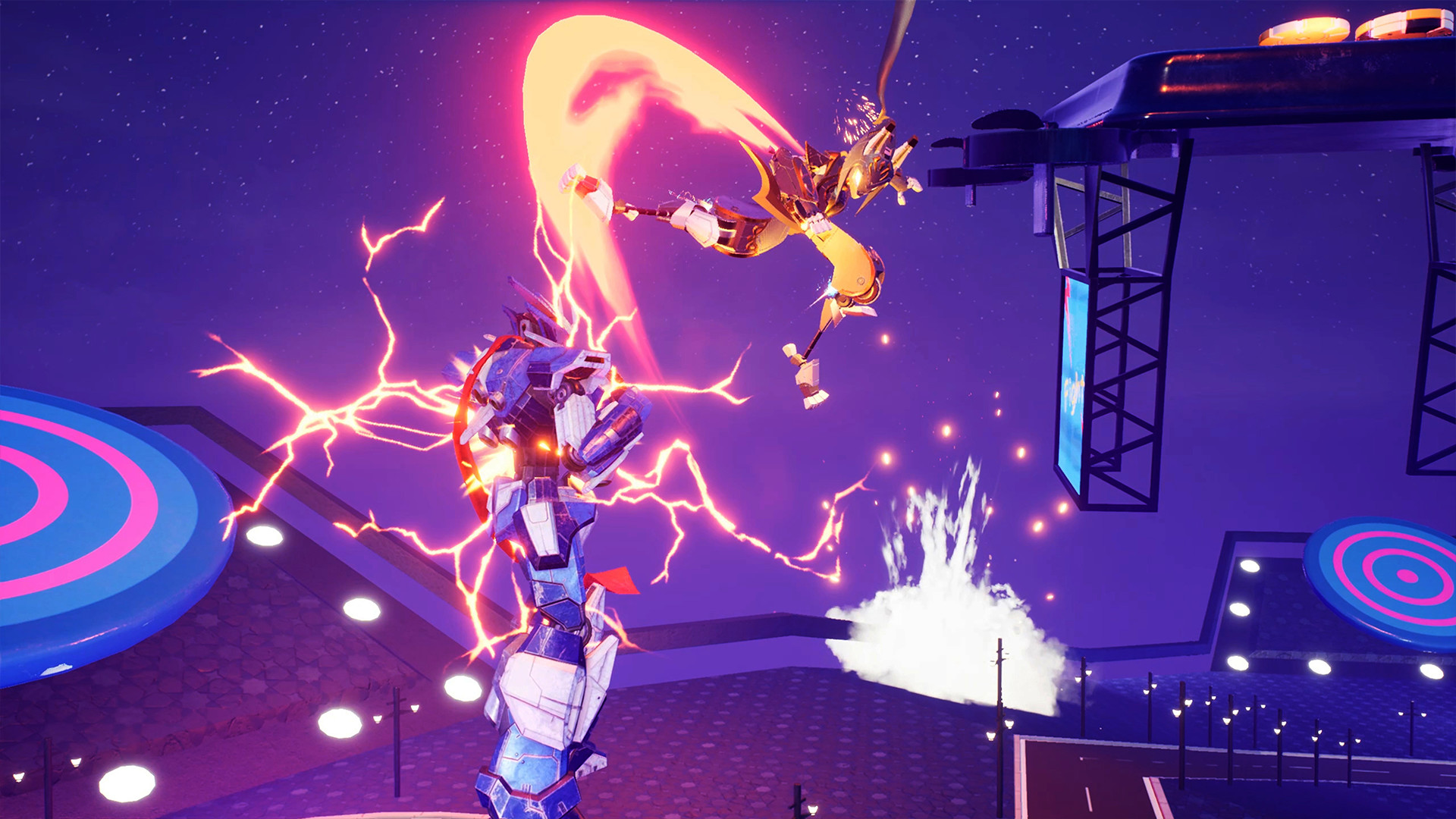Override 2: Super Mech League Review
Override: Mech City Brawl was a fun game back in 2018. Though it had a few flaws, it gave us a 3D arena brawler reminiscent of Kaiju games like Godzilla: Save The Earth, something that’s been sorely missing this last decade. Developed by Modus Games, we got news of a sequel only a few months ago and Override 2: Super Mech League is finally here, just in time for Christmas. Bringing us new gameplay modes, guest characters from Ultraman and refined gameplay, Modus have another winner on their hands.
Set 7 years after Mech City Brawl’s campaign, the Xenotype invasion was successfully defeated, and instead of defending planet Earth, these glorious mechs now entertain it. Pilots have begun competing in a global mech league to become champions, and this is where the campaign takes place. Leagues mode is guided by your new agent, Zoe, who begins walking through your rise to the top. That starts with local exhibition matches to earn sponsorship deals, which get you credits, eventually making your way to the professional leagues.
Everything is presented in a mission format, giving you different gameplay types to choose between, and you’ll compete across 10 different stages. That includes free-for-all brawls with 4 players, 1v1 solo fights and 2v2 team battles, offering different credit rewards. As a campaign, Leagues feels rather barebones compared to Mech City Brawl and becomes slightly repetitive in larger sessions, but it does what is needed. Sponsorship deals also emerge for accomplishing goals between these fights, such as blocking 100 times within 90 real-time minutes. You can play AI opponents but if you’d prefer, Override 2 searches for online players to fight, making this feel like an actual league.
Kapow

You can’t always choose a specific mech though. At first, you’ll be offered a selection of 5 mechs for each match, designed to stop players becoming over-reliant on one playstyle. When you consider that Override 2 has 20 mechs in total, each with varying attributes, this is understandable. For example, Setesh is a more cumbersome powerhouse, but Mya is agile and deals less damage. Going pro requires you to unlock one from the Garage with 1000 credits. Once that’s done, only unlocked mechs are available to fight with. They can be customised with accessories and credits can also buy avatars for your pilot profile.
Every mech employs a basic move set. You’ve got a shield for quick defence that opponents can break, grabs to throw enemies and stage objects, dashing, and double jumping for reaching platforms. A mech’s main attacks are just punching and kicking, letting you choose between hitting hard or fast. Mechs all have unique special abilities too. To name a few, Aura can throw their halo for AoE damage, Pescado grabs opponents with a frog-like tongue to bring them in from afar, and Watchbot can stun nearby opponents.
Modus Games have mostly kept the original gameplay format intact, attacking opponents until they run out of health. There have been a few changes which otherwise refine this experience though, and as a result, players have more freedom during fights. Previously, special attacks required you to charge up a meter before use, but now, they can be used at will. Furthermore, it also removes Mech City Brawl’s heat meter, an anti-button spam measure that made mechs overheat if you constantly attacked.
Badaboom

Ultimate abilities are the biggest change though, as these originally became available once you took 75% damage, launching a devastating last resort attack. This time around, yellow charging circles will appear across the stage and standing inside them gradually charges your ultimate meter. Once filled, players can unleash this for heavy damage, and you can do this multiple times per session. If you’ve taken damage, charge time is reduced, which keeps proceedings balanced. Sadly, Override 2 still suffers from framerate drops (at least on PS5) when stages get hectic, which is disappointing to see but thankfully these don’t occur as frequently.
Outside of Leagues, you can practice within training mode, but multiplayer is what will keep you coming back. Allowing four players to join locally and online, you’ve got four modes that includes free-for-all fights and team battles. Then we have Control, a “King of the Hill” style mode where a blue circle appears around the stage that slowly closes in, moving to new locations. Reminiscent of battle royale games, remaining outside of the circle means losing your health until one person remains. Xenoswarm is the last option, pitting you against a horde of alien fiends in a throwback to Mech City Brawl. These both make for enjoyable alternatives, although Xenoswarn was, unfortunately, the prime offender for framerate issues, since more enemies were present.
Override 2: Super Mech League is a great sequel, and by removing Mech City Brawl’s more tedious elements, Modus Games have created a thoroughly enjoyable 3D brawler. With more refined gameplay, improved performance, and a great roster of mechs, this isn’t a simple rehash of the original. Though Leagues can be repetitive in solo play and it holds infrequent performance issues, there lies a fun multiplayer experience here for Kaiju fans that comes highly recommended.

